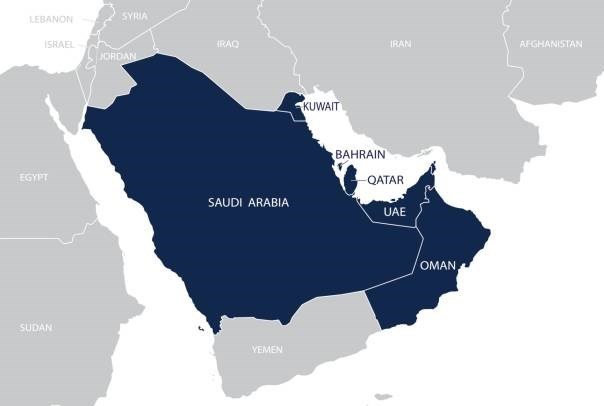What was the cause of the economic stagnation of the Persian Gulf countries in 2023?

| Although the members of the Persian Gulf Cooperation Council took an important step to overcome the "Dutch disease" and move towards a non-oil economy with a series of reform programs, they are still facing serious challenges to achieve their desired economic goals. |
The challenges of the global economy
The World Bank has considered the current developments in the oil markets, especially the impact of global market problems on the economy of the countries in the region, among the main reasons for the decline in the growth rate of Arab countries in 2023.
This report is consistent with the results of a Reuters survey of economic experts. The results of both reports emphasize that the economy of the Persian Gulf countries is in a downward trend due to the decrease in oil revenues and the decrease in production. In other words, contrary to the propaganda made by the Arab kingdoms regarding diversification in income baskets, it still seems that “black gold” has the first and last word in the economy of the Persian Gulf countries.
October 2022 The oil alliance “OPEC Plus” announced a daily reduction of two million barrels of oil from November 2022 to September 2023. This decision was implemented voluntarily by member countries such as Saudi Arabia and the United Arab Emirates. Now it seems that this agreement will be extended until the first three months of 2024.
In this report, it is stated that due to the increase in interest rates in America, Europe and most industrialized countries, the inflation index has increased in these countries and It has had a negative impact on economic activities and consumer demand. For example, the international company “PWC” believes that in 2022, the Persian Gulf countries were able to distance themselves from geopolitical challenges, energy crisis and fluctuations. Western markets should register a better performance. However, the stagnation in one third of the world’s economies and the decrease in the price and production of crude oil have caused the oil-rich countries of the region to record lower economic growth in 2023. The economies of the governments of the Persian Gulf have advised them that these countries should be more careful in managing their oil revenues and prevent the increase in current costs. In addition to this, the prestigious economic institution has asked the governments affected by the Dutch disease to consider the principle of transparency for the formulation of this year’s budget.
, global developments in the field of energy and diversification of economic baskets. Another recommendation of the International Monetary Fund to these countries was to allocate more public resources for renewable energy sources and infrastructure resistant to climate change. Pursuing the reform policy with the aim of making the tax collection system more efficient and rationalizing the wage bill for workers is one of the other recommendations of the International Monetary Fund to the countries of the Persian Gulf Cooperation Council in this report.
Positive economic growth in 2024
Recently, the World Bank claimed in a report that the economy of the member countries of the Persian Gulf Cooperation Council, unlike in 2022, experienced a growth of 7.3 percent. did, in 2023, only 1 observation of positive growth has been recorded. Unlike last year, this international organization believes that the economic growth rate of the mentioned countries will increase to an average of 3.6% in 2024. A part of this report states: “Saudi Arabia’s economy will shrink by 0.9% in 2023, but will once again pick up in 2024 and register a growth of 4.1%.”
Continue to We will discuss the economic growth situation in Qatar, Oman and Bahrain. In 2023, the economic growth of Doha was 2.8 percent, which will reach 2.3 percent in 2024 with a significant drop. The Sultanate of Oman and Bahrain will also experience a higher economic growth than in 2023 and will probably experience a growth of 2.7 and 3.3 percent respectively in 2024.
Continuity of Dutch disease among Persian Gulf Cooperation Council countries
Next, we will look at the state of economic growth in Qatar, Oman and Bahrain. In 2023, the economic growth of Doha was 2.8 percent, which will reach 2.3 percent in 2024 with a significant drop. The Sultanate of Oman and Bahrain will also experience higher economic growth than in 2023 and will probably experience a growth of 2.7% and 3.3% respectively in 2024. Fars
During recent years, the member states of the Persian Gulf Cooperation Council, by publishing numerous vision documents, tried to create this perception among think tanks, media and analysts that the Persian Gulf countries have become dynamic economies that Reforming economic laws, attracting capital and reputable international brands, developing transportation infrastructure and artificial intelligence-based technologies, strengthening tourism infrastructure, etc. are no longer dependent on the increase or decrease in energy prices in global markets, as in the past.
end of message/+
| Publisher | Tasnim News |



